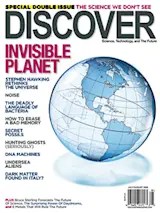For more amazing feats of 3-D scanning, check out our gallery, 3-D Scanning: How to Put the Real World Into Your Computer.
A rich history of life on earth lies out of sight—in 100 million-year-old nuggets of amber, in potato-shaped fossil eggs, and in mundane-looking ancient teeth. Correction: These things used to be out of sight. New imaging tools borrowed from medical research and industrial engineering are beginning to liberate some of evolution’s most closely held secrets. “I thought we’d never be able to see inside specimens without breaking them open,” says Harvard University anthropologist Tanya Smith. “The idea that we can go into an object like a fossil and pull a piece of time out virtually is amazing.”
The breakthrough relies on computed tomography scanning, better known as CT. It is much like the familiar process used by hospitals to image the insides of patients, but amplified to levels ...














